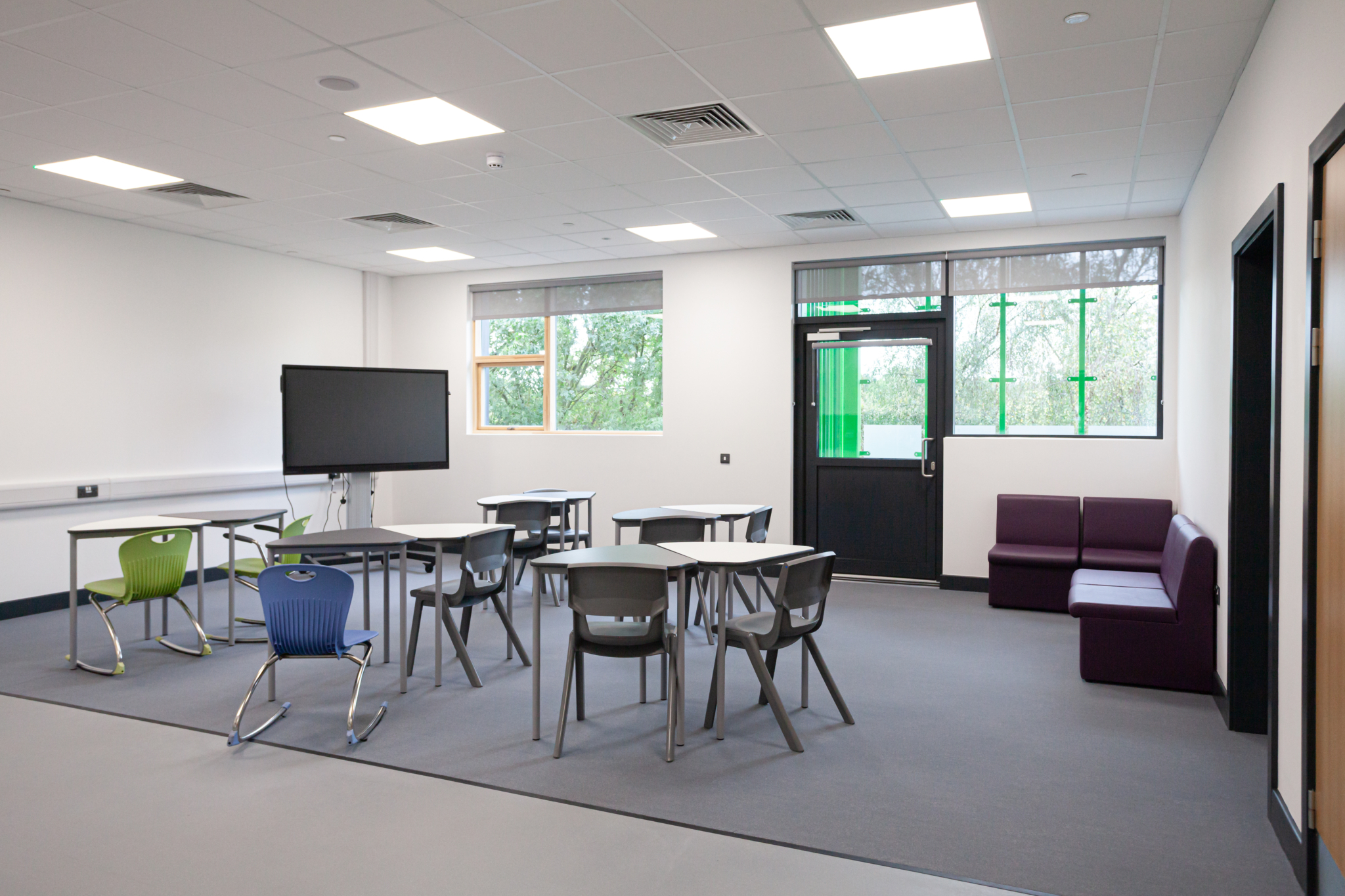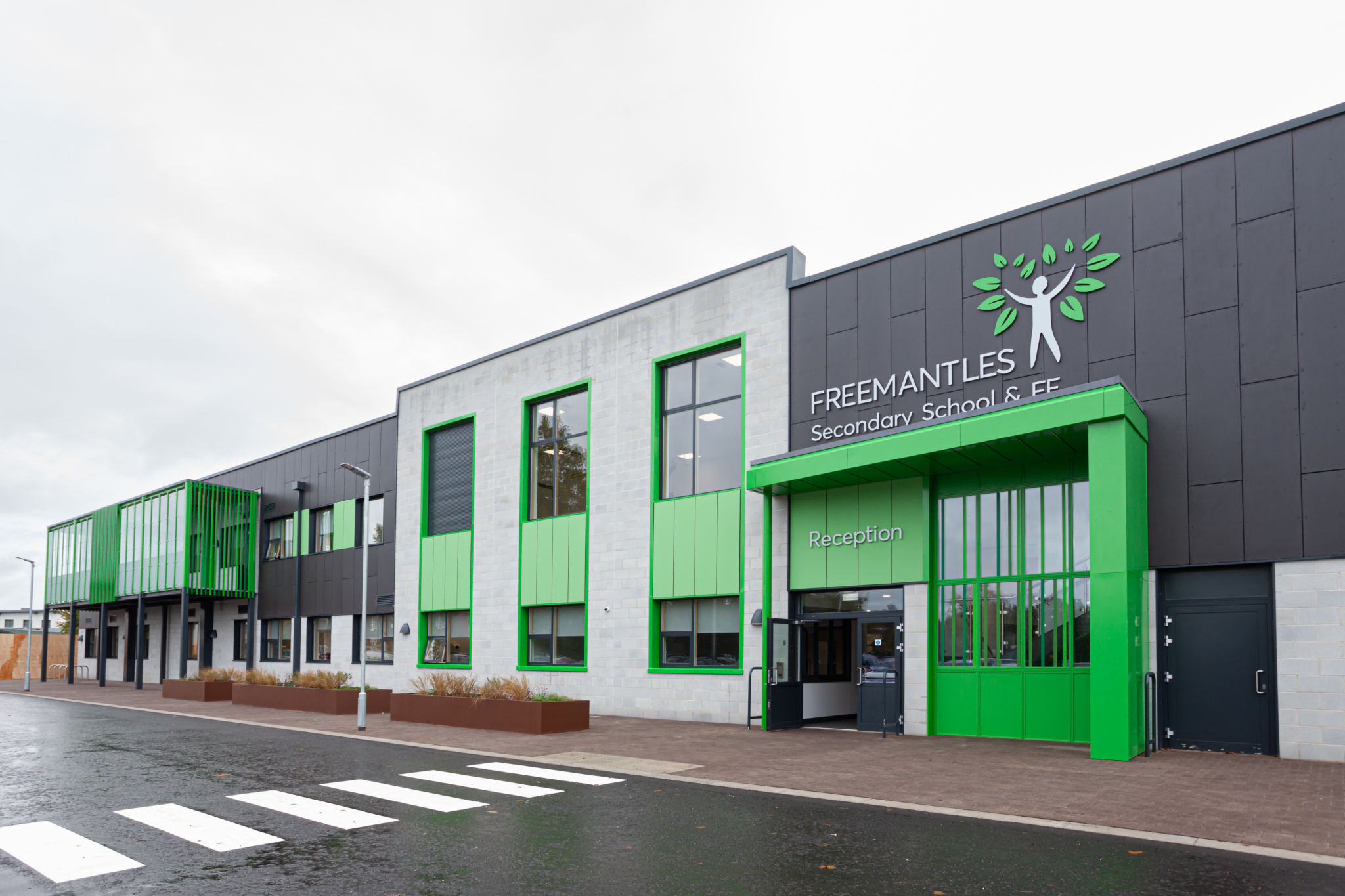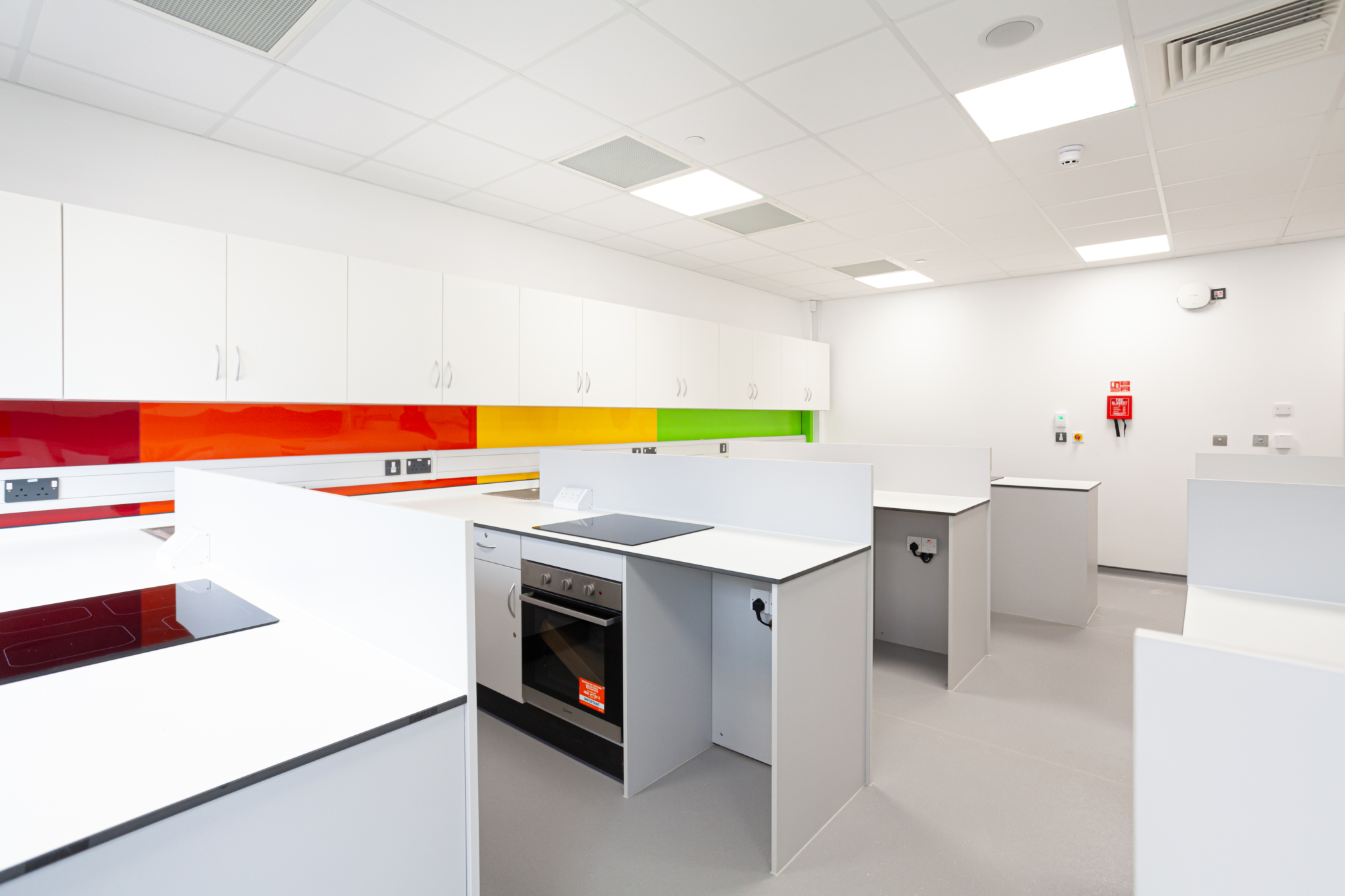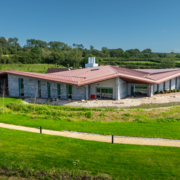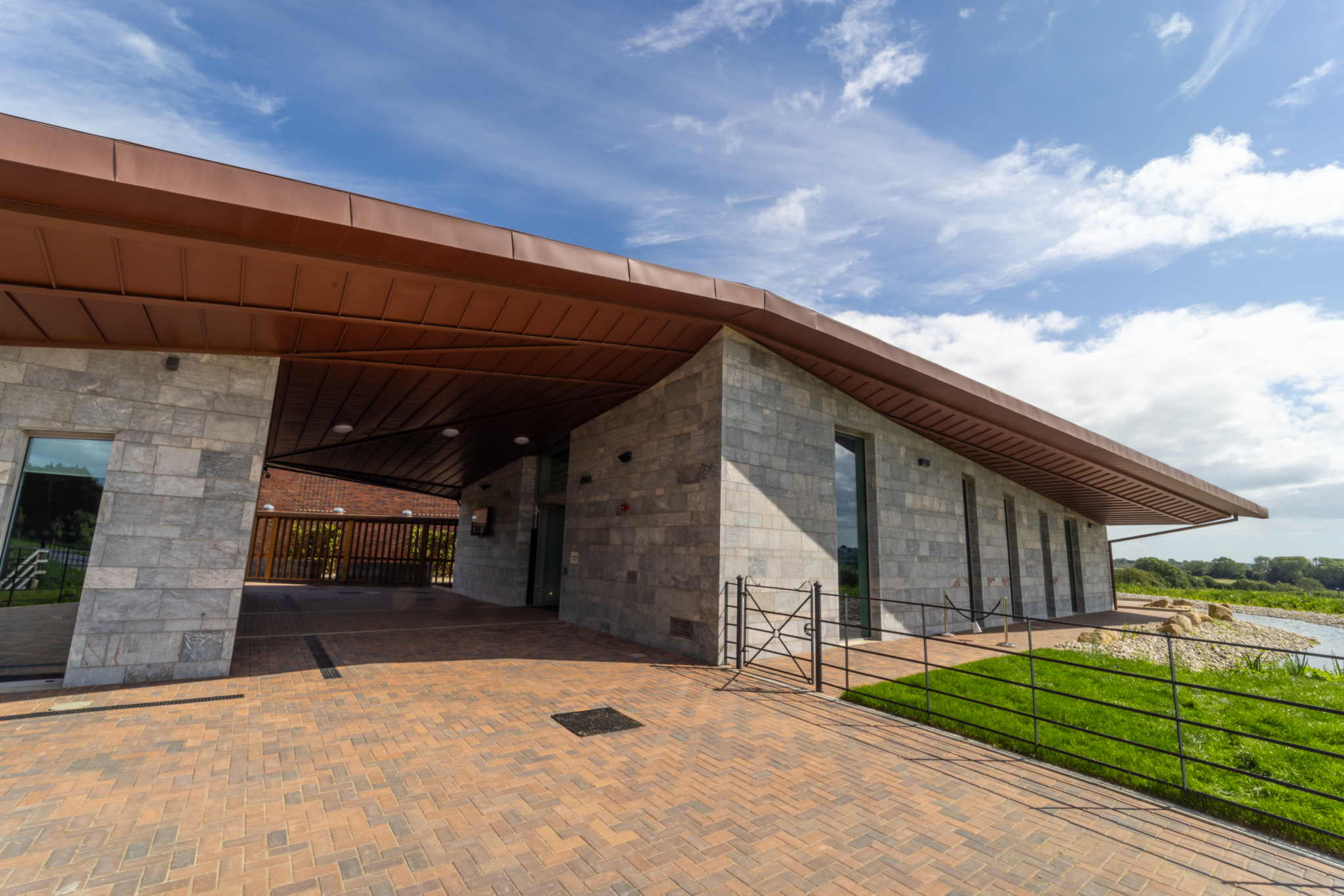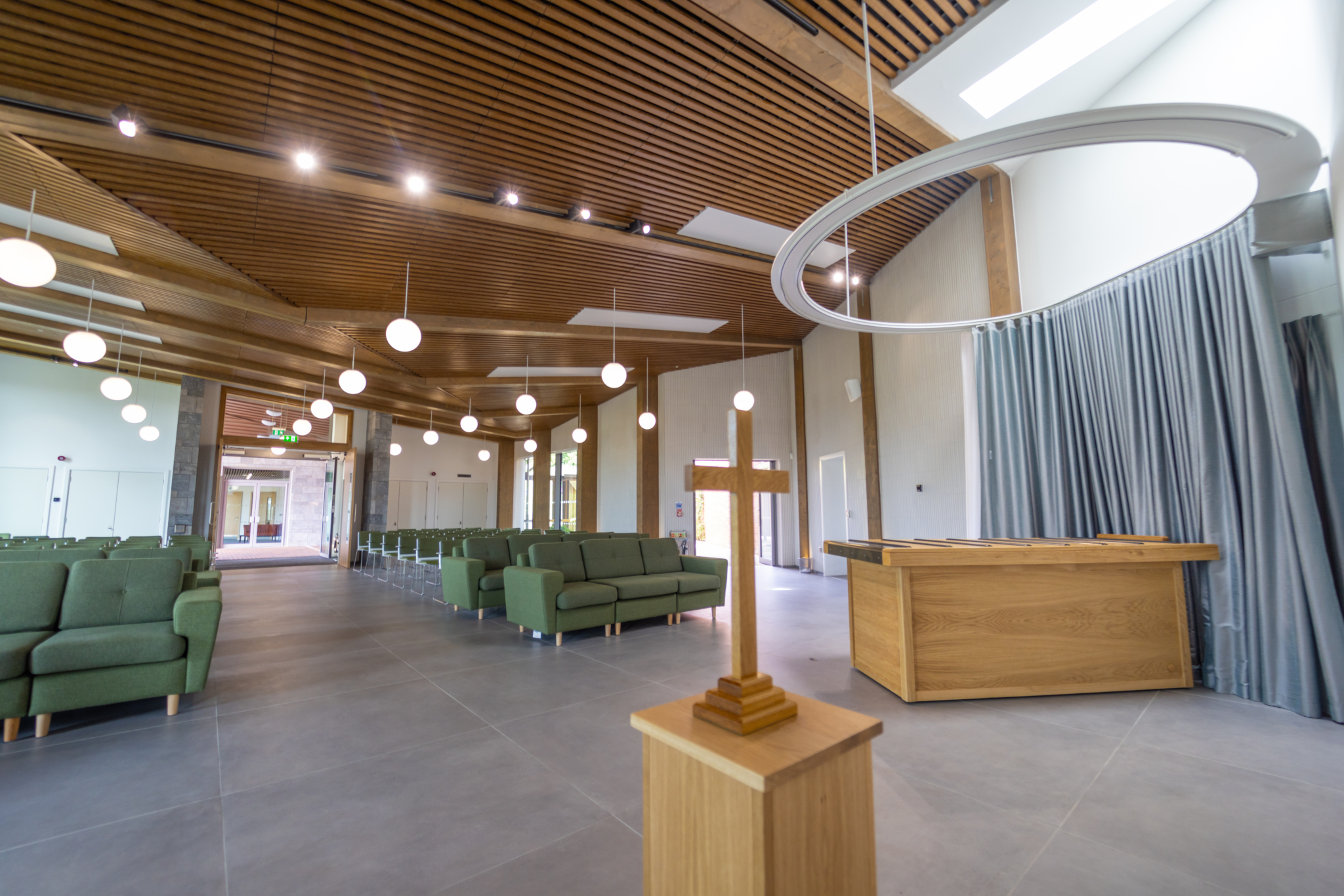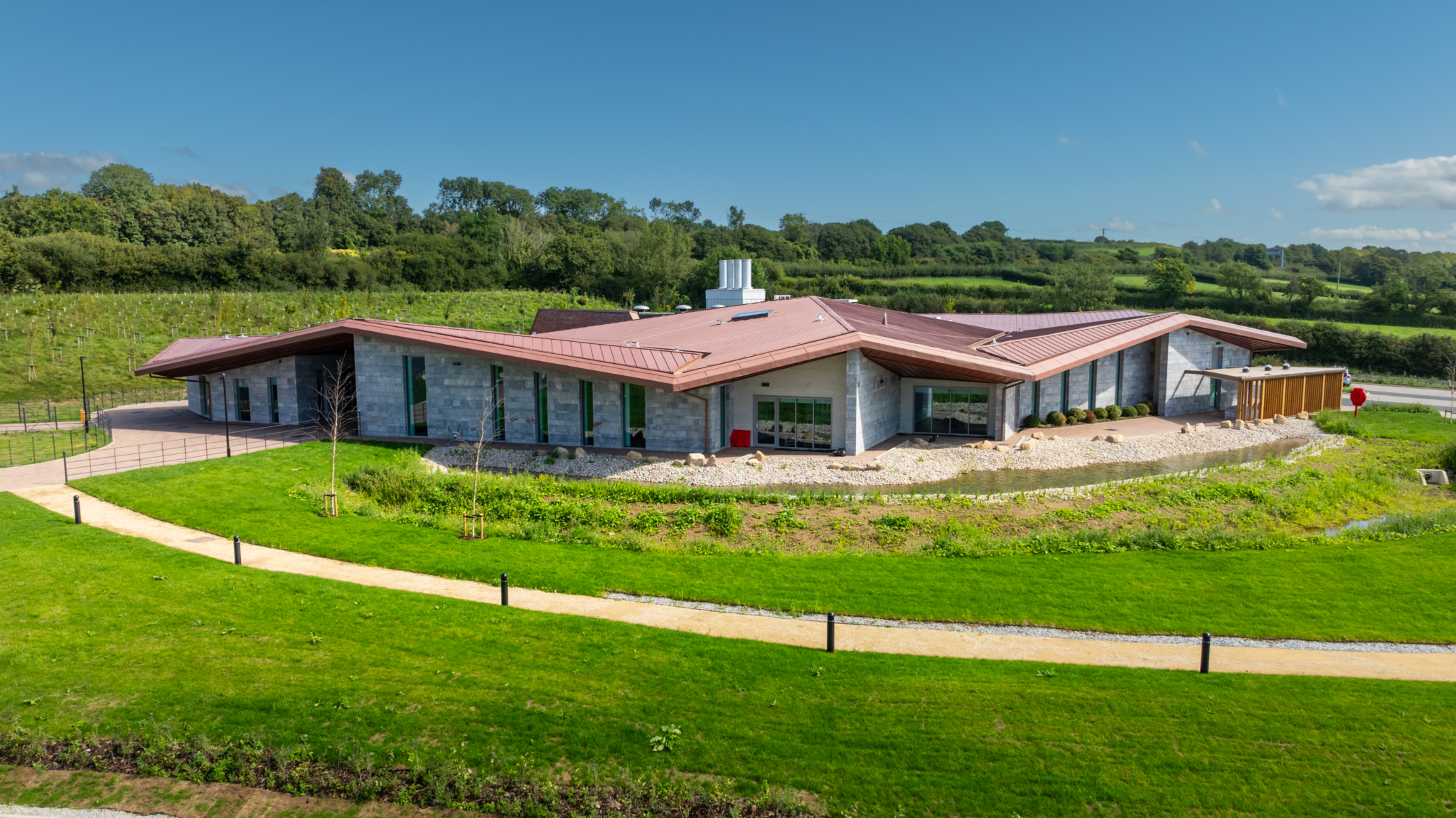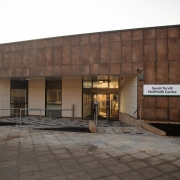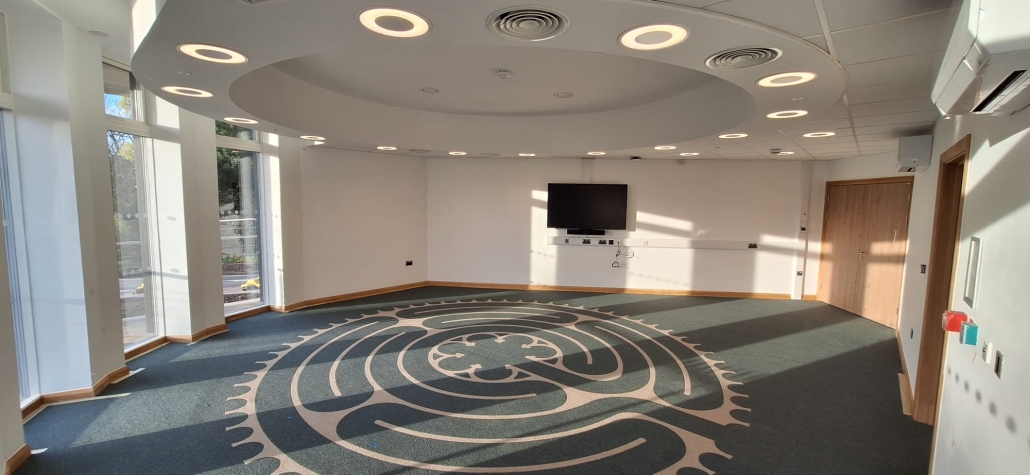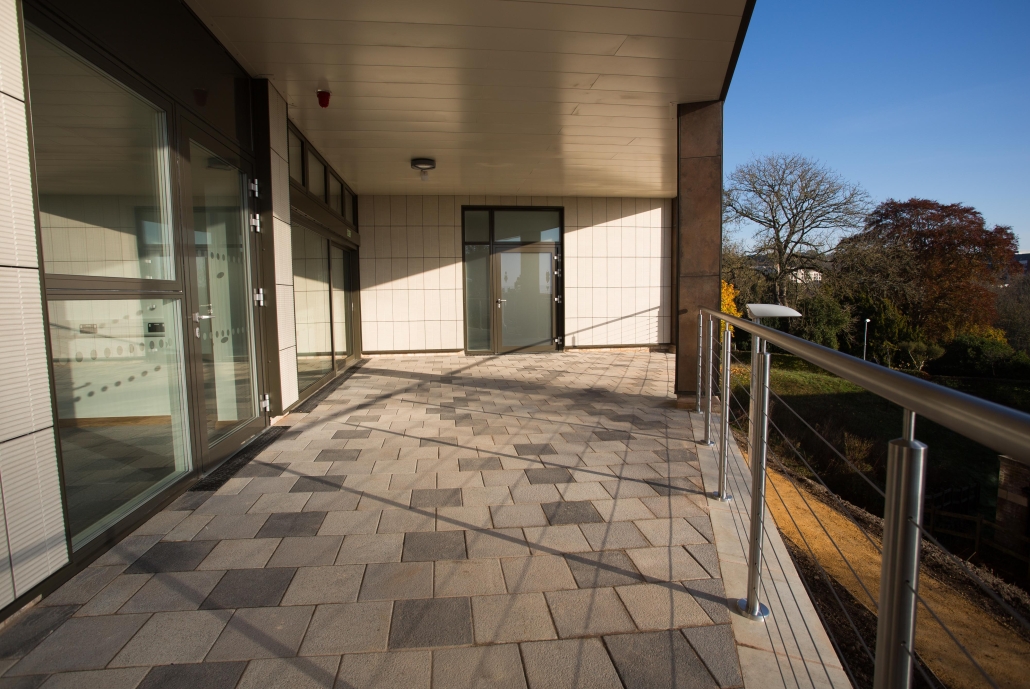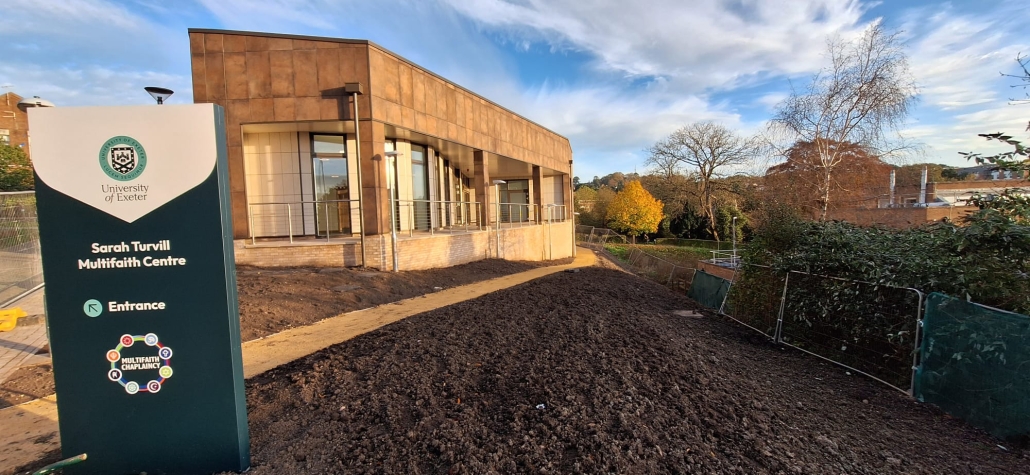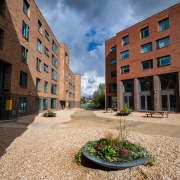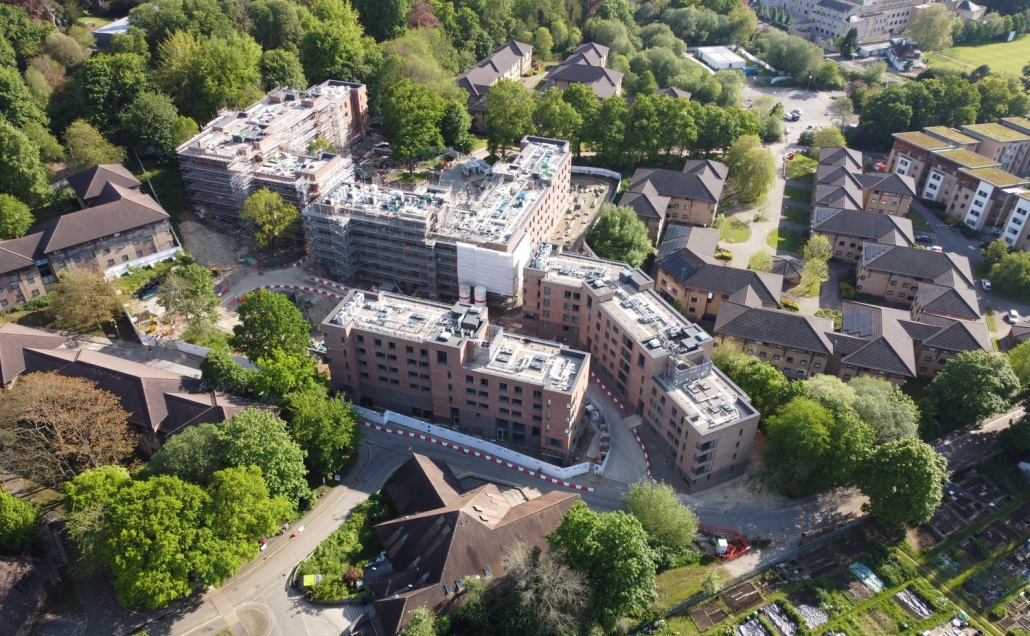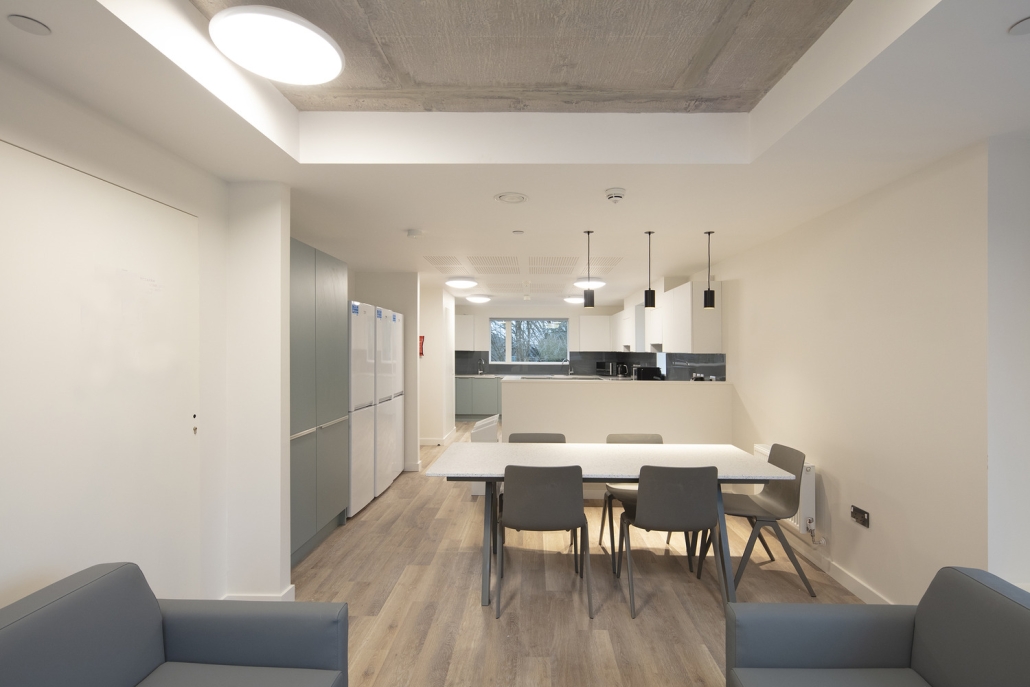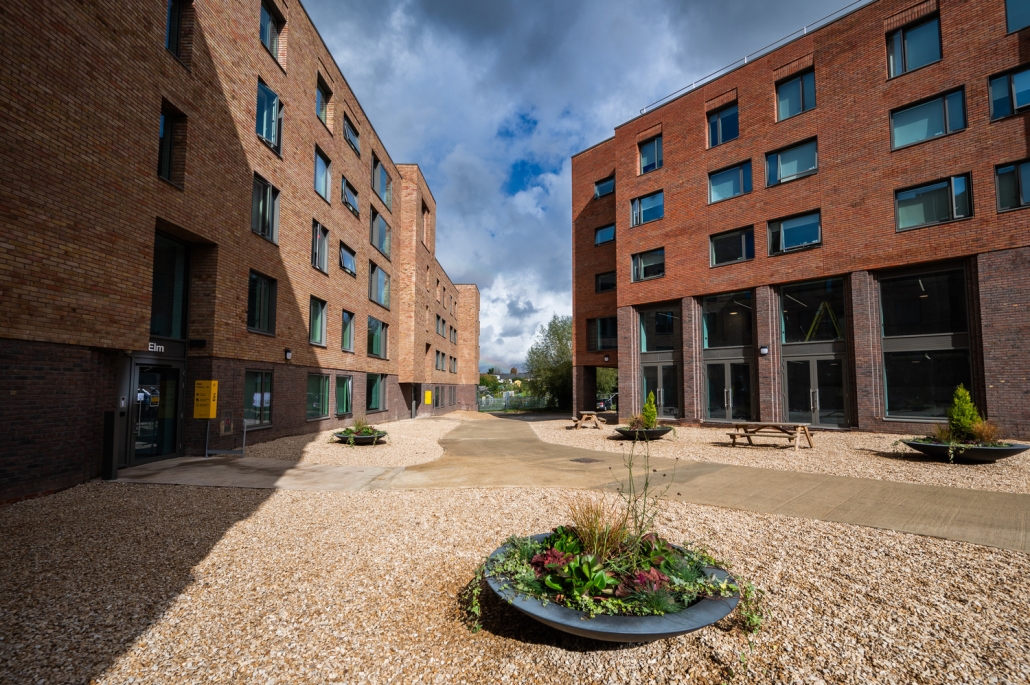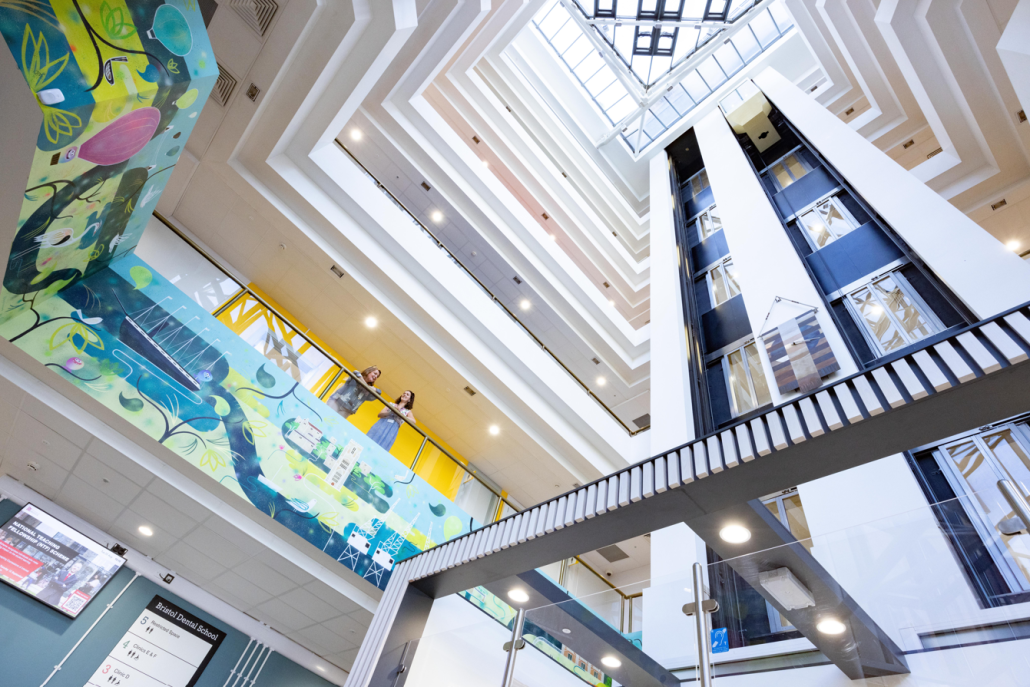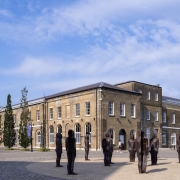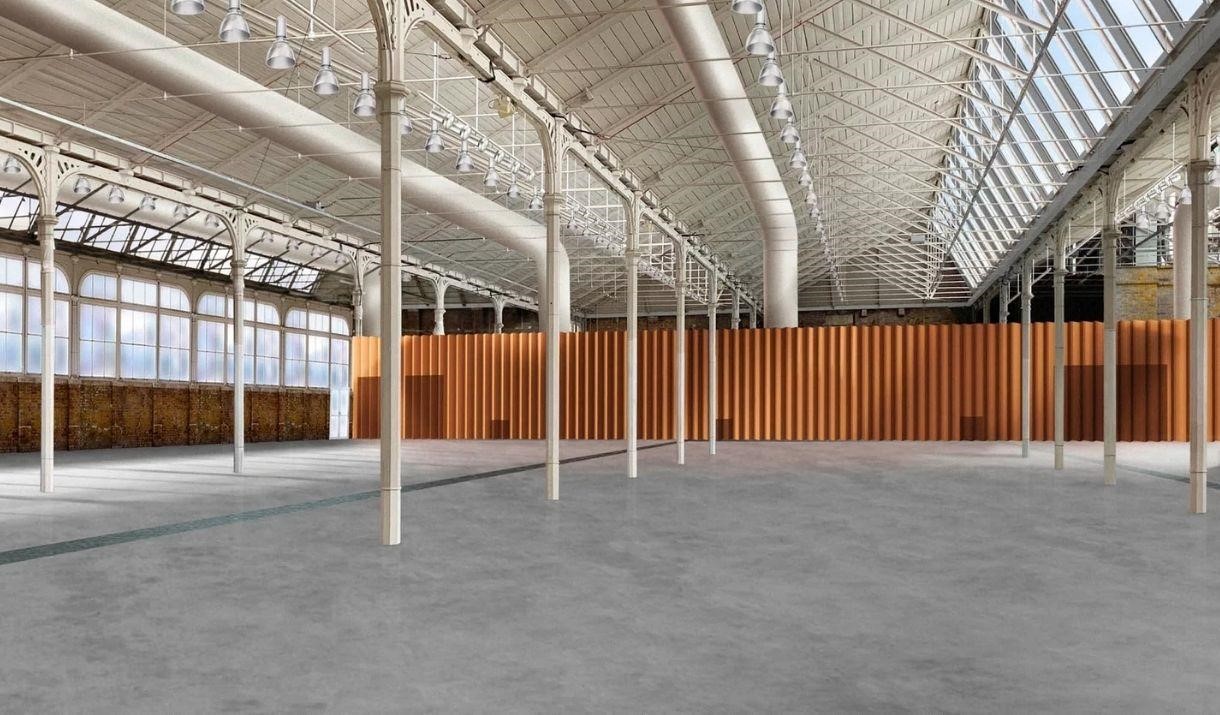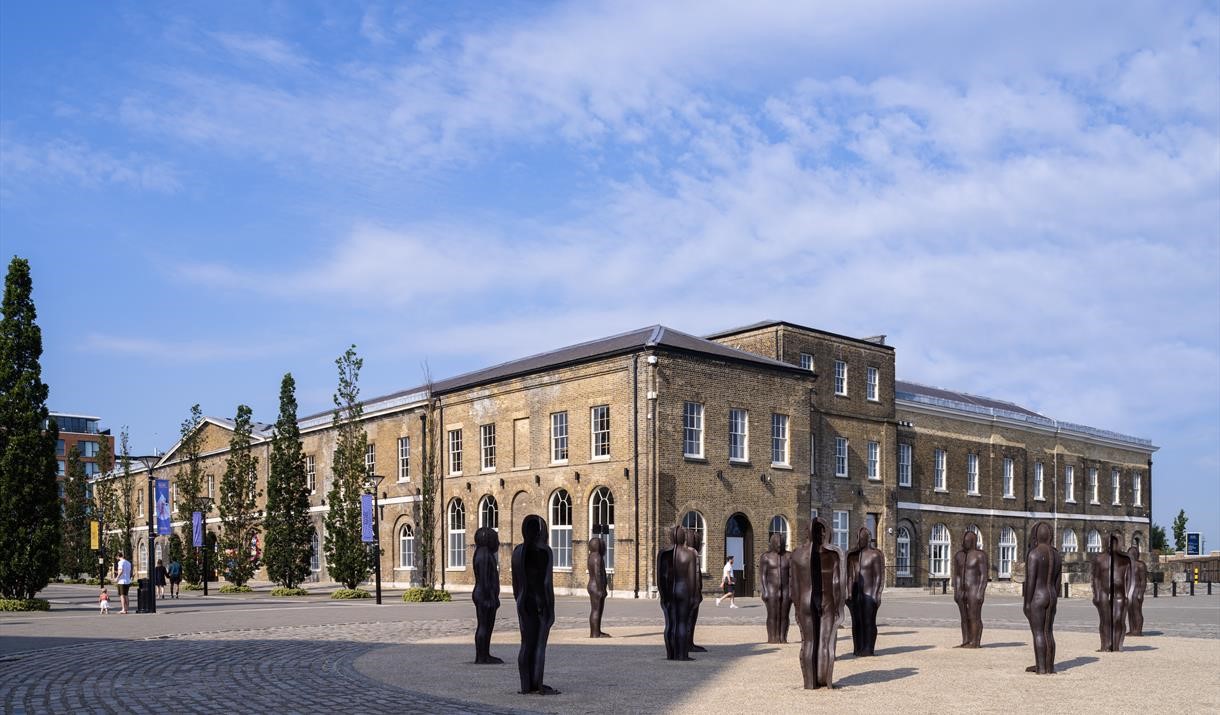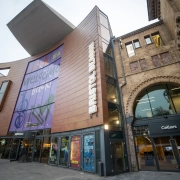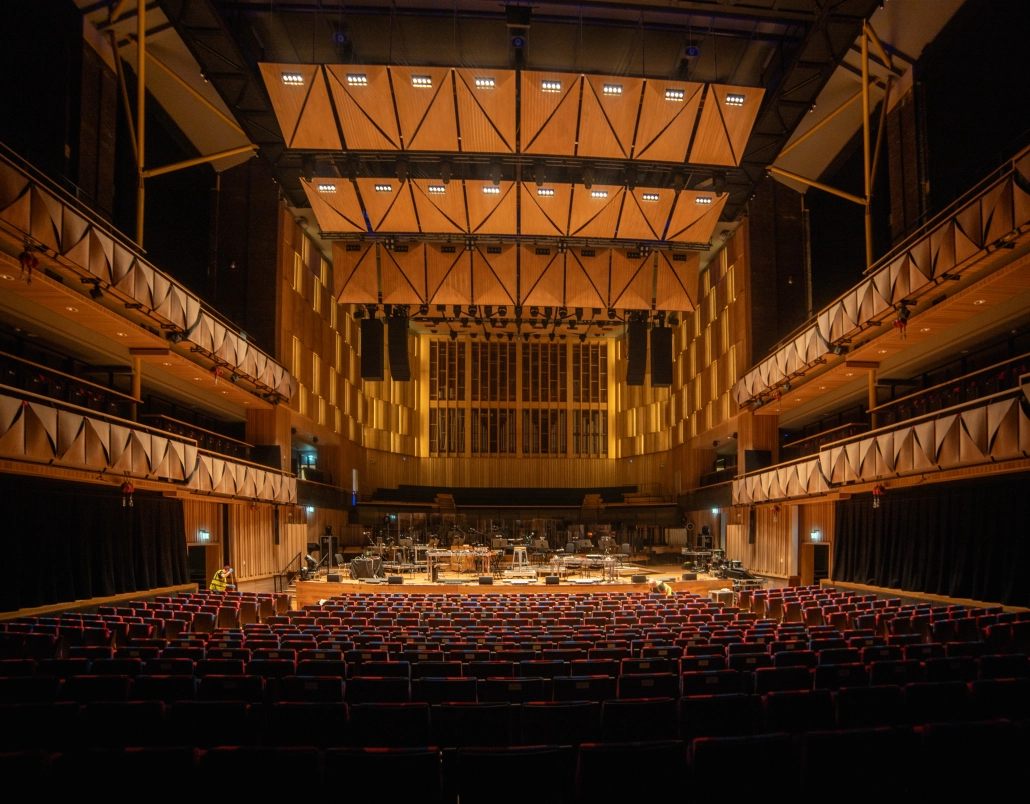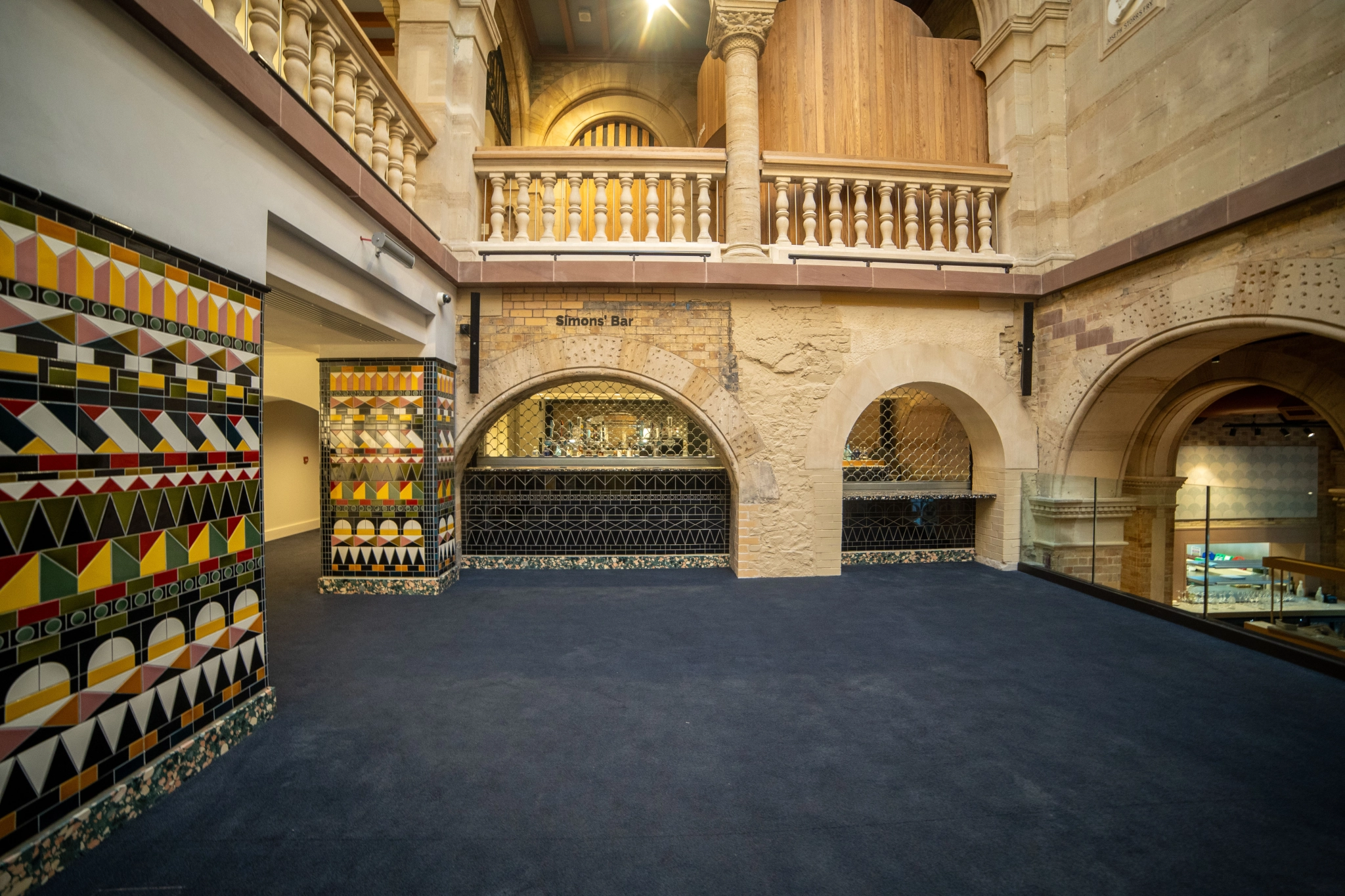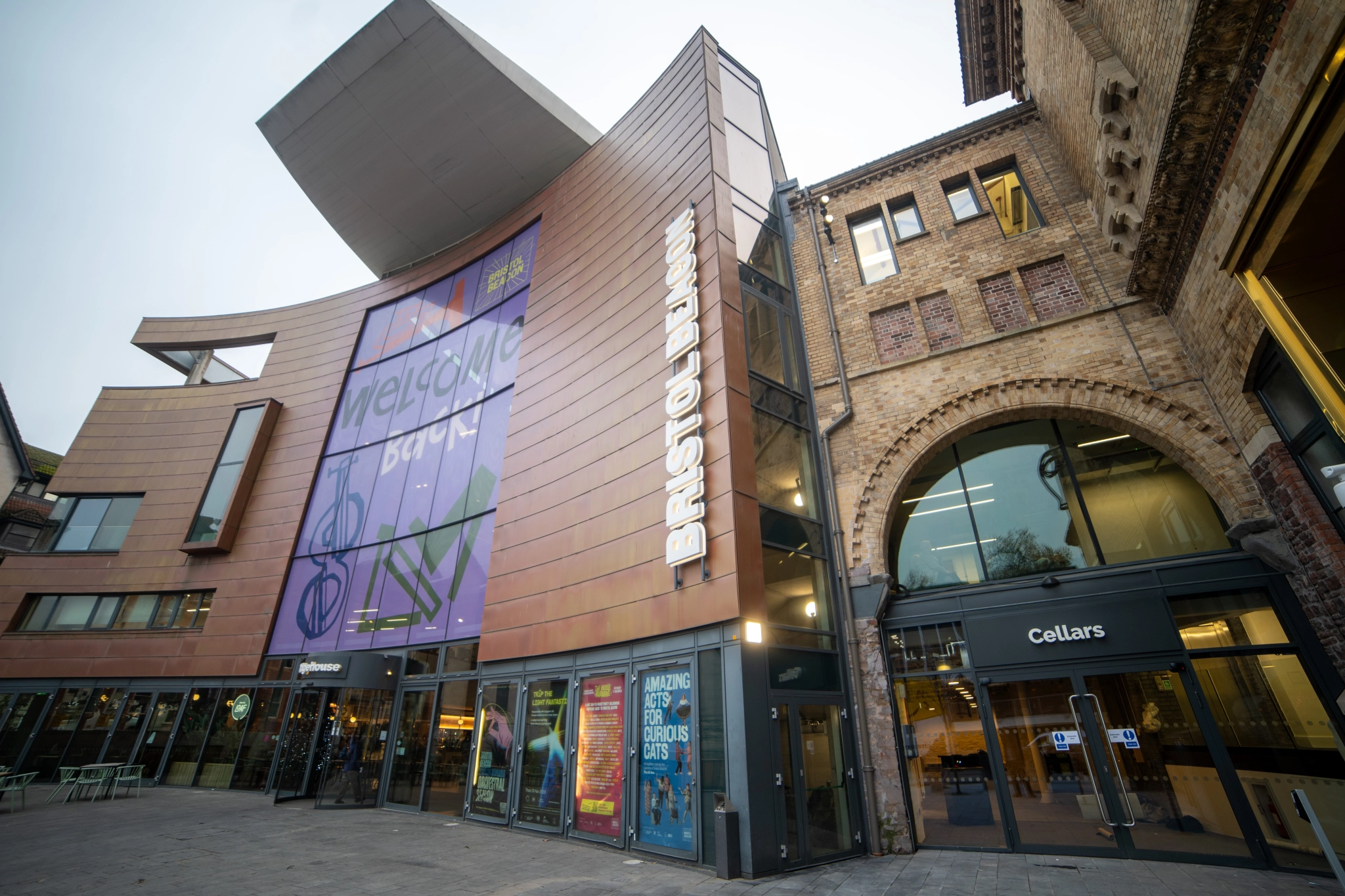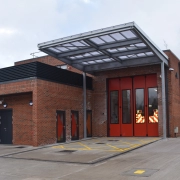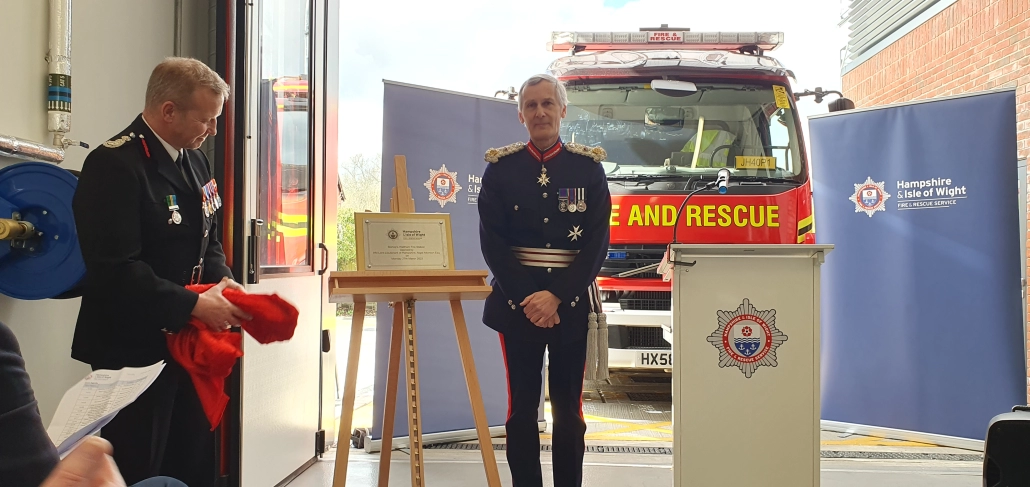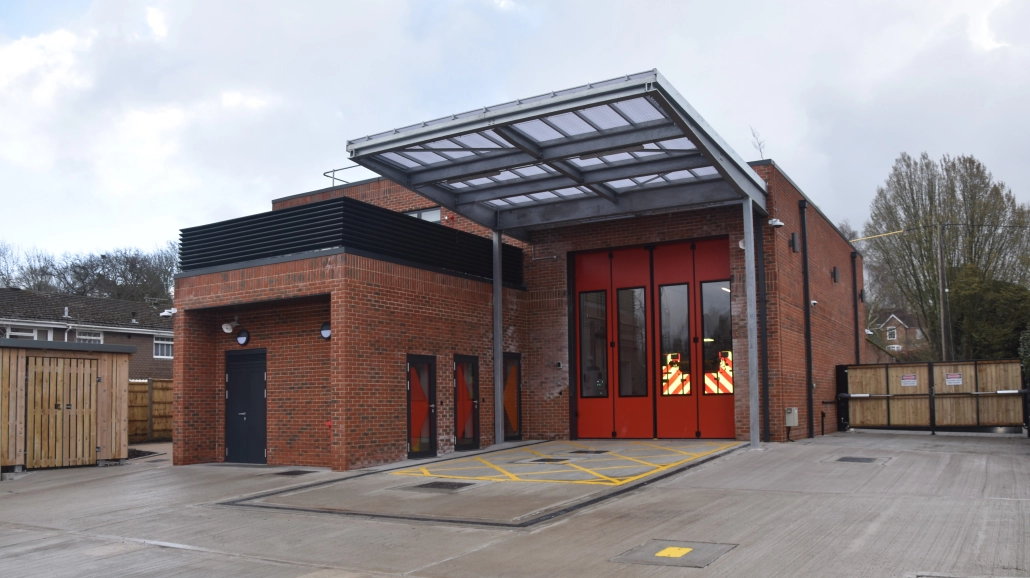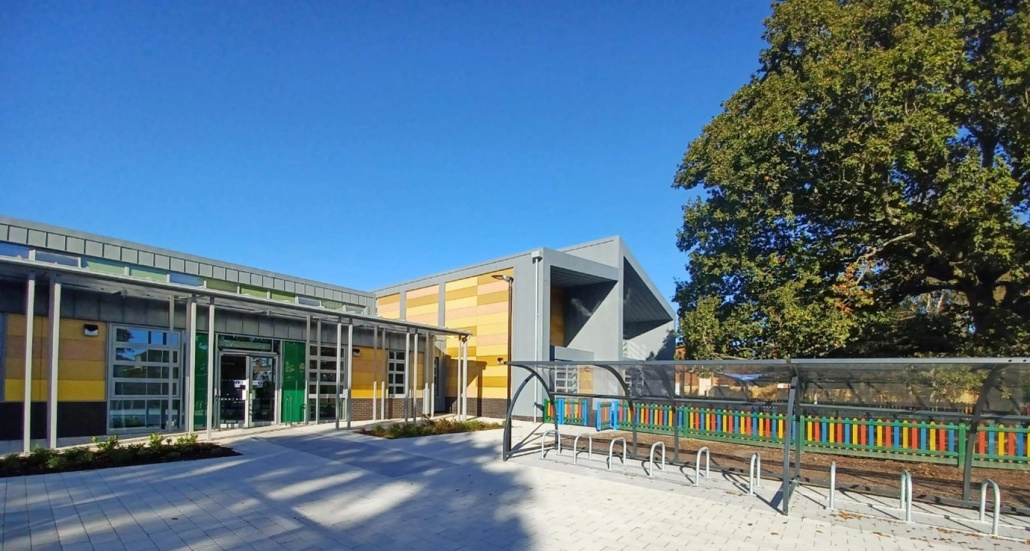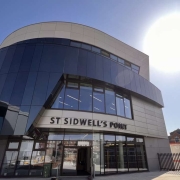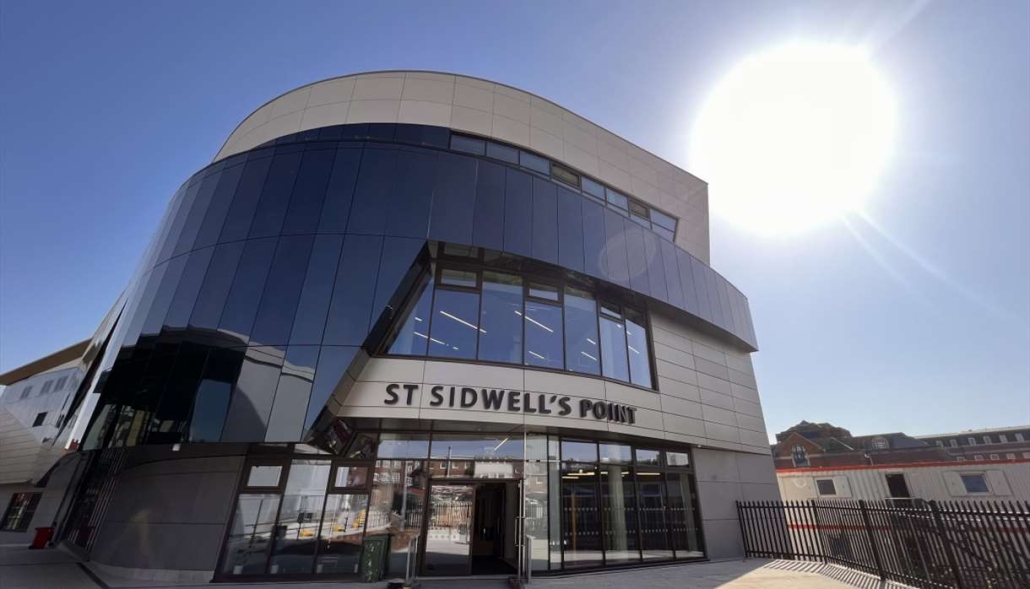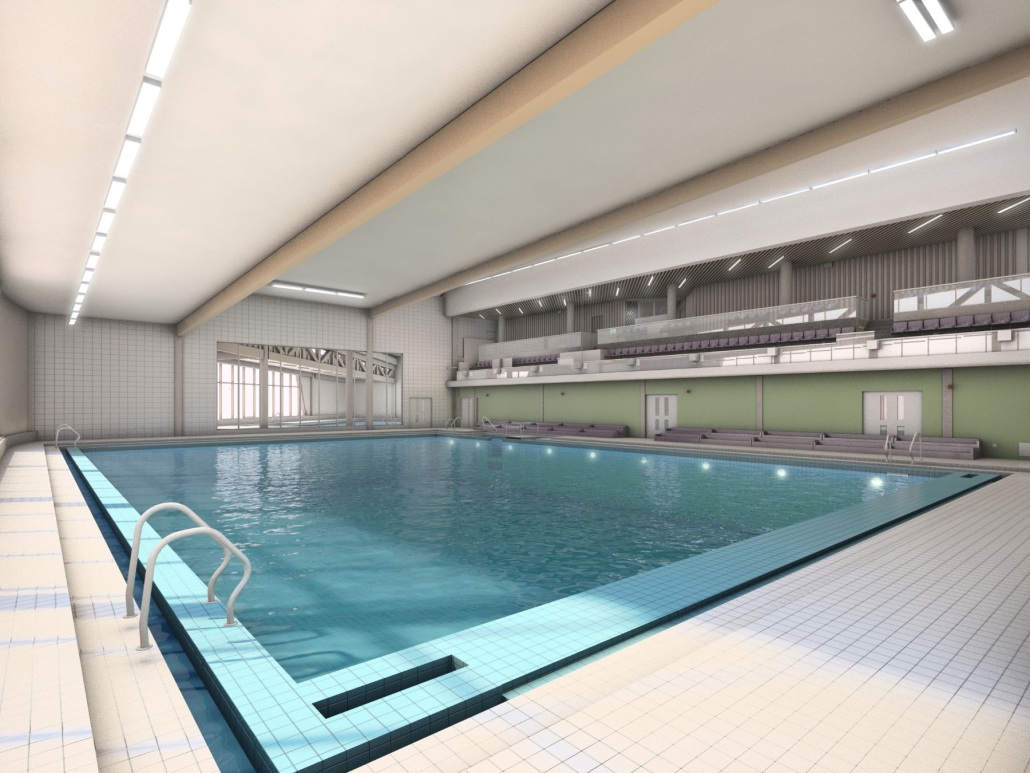Freemantles Secondary School
The Challenge
The project faced a multitude of challenges, including a live site adjacent to the construction area, imposing constraints on logistics and site management.
The task of developing a school tailored to cater to the needs of children with severe learning difficulties, particularly those with SEN/ASD, added layers of complexity to the project.
The tight timeline further enhanced the situation, demanding innovative solutions to adhere to the tight programme.
Using Modern Methods of Construction (MMC) proved instrumental in achieving both time and cost savings, enabling the project to stay within the confines of the client’s budget while meeting the ambitious schedule.
The Solution
Through a comprehensive lessons learned process, Morgan Sindall Construction established a continuous improvement cycle, capturing insights and best practices from each project stage.
Collaborating with Streif, consultants, and internal design managers, the team refined design coordination processes, emphasizing the importance of early-stage design freeze to streamline offsite manufacturing and to make sure the project was within programme and budget.
The Results
The implementation of these refined processes and strategies led to smoother project progression and minimized potential delays.
By prioritising effective site segregation and communication strategies, Morgan Sindall Construction successfully mitigated disruptions to school operations during construction, ensuring a conducive learning environment for students.
This commitment to continuous improvement not only enhanced project efficiency but also reinforced the organization’s reputation for delivering high-quality, impactful construction projects.
Due to using MCC this project achieved significant carbon savings of over 1220 tonnes and reduced transport miles by a staggering 132,000.
The expansion not only met but exceeded expectations, with a 10/10 customer satisfaction rating.
Number of work placement weeks
SME Spend
Added Value
Client Satisfaction
Contractor Performance | Commitments
Legacy
5 workless job starts
97 trainee weeks
Schools engagement: 2 careers fairs.
7 work placement week
Aftercare
Soft landings for handover
Dedicated Morgan Sindall point of contact
On-line portal for notifying any defects with 3 priority categories for response times
Sustainability
100% timber responsibly sourced
1220 Tonnes of Carbon saved
Safe
Zero RIDDORS
CCS Score 45/45
Fair
100% payment within 30 days terms
Client Testimonials
Plymouth Crematorium
The Challenge
The challenge was not only to create a state-of-the-art facility with larger ceremony spaces, advanced technical operations, and a dignified environment rooted in the calmness of the surrounding landscape, but also to do so within a constrained budget and during a period of significant disruption caused by the Covid19 pandemic and the war in Ukraine.
The project was procured through the Southern Construction Framework (SCF), which provided a collaborative two stage process and enabled early contractor involvement. This approach proved critical when initial cost planning had to be reviewed.
The Solution
Through the SCF process, the project team were able to undertake extensive value engineering, identifying more than £4m in savings while maintaining the quality and ambition of the design. At the same time, enabling works such as site access improvements, ecological mitigation, archaeological investigations, and the diversion of a rising sewer main were advanced to keep momentum on site and mitigate programme delays.
The complexity of the design, requiring careful attention to privacy, dignity, and technical precision in every detail, added further pressure to the delivery. Ultimately, the SCF framework provided the structure for collaboration, transparency, and problem solving that allowed the team to overcome financial and logistical challenges and turn their long held vision of a modern bereavement centre into reality.
The finished building is divided into three main parts due to the land’s topography and the requirement for separate spaces: two ceremony spaces with ancillary rooms, and a private ‘back of house’ building for technical equipment, support, and welfare facilities. The new facility has designs inspired by the landscape, where the buildings nestle into the slope of the site.
The Results
The project has delivered three spacious ceremony rooms of differing capacity inspired by Scandinavian design, offer a minimal and tranquil aesthetic. The architectural language, materials and colours used are natural and provide a neutral backdrop for celebrations of any denomination, faith or theme. Large windows provide plenty of natural light and opportunities for reflective views. The latest AV technology for livestreaming services and colour-change lighting settings are also available here.
The modern crematory houses three cremators with space for a fourth. The 17-acre site includes a memorial meadow, dedicated children’s memorial area, and other thoughtfully selected memorials.
The development also includes offices, a reception, waiting areas, a family room, a meeting room, an administration area, and car parking for mourners. A separate café building with two flexible function rooms is positioned near the main entrance with its own car park.
This new project replaces outdated facilities with a modern one, maintaining in-house service delivery. The unique design, using local and natural materials, provides a different architectural style rooted in the local vernacular. The design focus of the project was landscape-led, with careful consideration of the building’s location, use of topography, and natural drainage elements delivering the initial brief requirements.
Number of apprentices
SME Spend
Added Value
Contractor Performance | Commitments
Legacy
Throughout the duration of the project, we completed: Launched the first cohort of Hard Hat Ready, the first 4-week programme focused on bringing the unemployed into employment based on a live site in partnership with Seetec Plus. 31 learners took part in the programme, 30 gained CSCS cards, 28 progressed into employment and/ or apprenticeship opportunities.
Community Engagement: Throughout the duration of the project, we completed: Kier volunteers dedicated their time to maintaining Weston Mill Cemetery and Efford Crematorium, working through challenging conditions to clear litter and debris from graves and tend to the garden of remembrance. This effort reinforced our commitment to social value, complementing the construction of the new crematorium by supporting the local community and its surroundings.
Kier supported YMCA Plymouth through initiatives like the young girls’ mentoring programme and the “Pledge to Paint” campaign, which renovated two classrooms that hadn’t been updated in over 20 years. These efforts empowered local youth and improved educational spaces, highlighting Kier’s dedication to creating lasting social value in the community.
Sustainability
Collaborating with the design team and creating a detailed cut and fill model greatly reduced surplus excavation carted away to landfill, saving traffic movements, carbon emissions, time, and costs. The landscaping design was wildlife friendly, incorporating wildflower meadows and tree planting. Efforts were made to maximise retention of existing hedgerows and achieve an ecological net gain of over 10%. This had to be sympathetically done whilst incorporating suitable external features and space for memorialisation’s.
This project included an extensive SUDs system with associate ponds and included the diversion of an existing watercourse that was enhanced with native planting and bridged. A foul treatment plant was installed to save time and cost by avoiding the need to connect to existing offsite main drainage infrastructure.
The carbon footprint of the building was reduced by producing renewable energy on site and reducing the power consumption of the building. This has been done by installing a substantial solar arrangement to the rear of the main building, and installing LED lighting installed throughout the premises. Additionally, electric vehicle (EV) charging points have been installed in the car parks.
Safe
Zero RIDDORS
CCS Score 40/45
Aftercare
Soft landings for handover
Dedicated Morgan Sindall point of contact
On-line portal for notifying any defects with 3 priority categories for response times
Fair
100% payment within 30 days terms
Client Testimonials
Sarah Turvill Multifaith Centre
Commencing in August 2023 and completed in December 2024, this £5.5m project serves the diverse student and faculty population at the University of Exeter. The enriching new facility aims to promote respect and diversity of all faiths and beliefs and create a sense of community and inclusion on campus and beyond. The new centre is a space for quiet reflection, multifaith activities and events, as well as providing a 50 person Muslim prayer space, and a dedicated home for the University’s Multifaith Chaplains who serve the whole community, uniting 14 faith groups and a student population representing over 150 countries. It is named in honour of alumna of the University and former Chair of the University’s Council, Sarah Turvill.
The Challenge
The biggest challenge faced by the project was the stringent demands of a Passivhaus project, which require a proactive approach, aligned supply chain and immense attention to detail. The project was also situated on a busy area of campus, sandwiched between student support buildings, lecture theatres, teaching spaces and even laboratories working within stringent environmental conditions, however, the project consistently scored 45 on the Considerate Constructors Scheme.
The Solution
Willmott Dixon team overcame these difficulties through collaboration with stakeholders and experience from other Passivhaus projects which included:
- Prioritising completeness and accuracy of design and detailing
- Having the Passivhaus certifier review all MEP (Mechanical, Electrical, and Plumbing) system selections before the supply chain begins purchasing equipment.
- Involving the supply chain early to ensure all materials and systems meet Passivhaus standards.
- Meticulous record keeping on all materials and construction details to achieve Passivhaus certification.
- Investing in training and site visits to ensure the team is comfortable with the specific requirements of the project.
The Results
Sustainability and reducing carbon emissions have been fundamental to the design and the construction of the building, which aims to achieve Passivhaus certification for its energy efficiency, carbon reduction and air quality. The building is constructed from energy efficient porotherm blocks and includes air source heat pumps and solar panels on the roof.
Our work to achieve Passivhaus Classic Certification included rigorous low-energy design standards, significantly improving building comfort, air quality and energy use, with greater carbon reduction.
One way was through using low carbon porotherm clay blocks, which are made from 30% recycled materials and have an expected lifespan of 150 years; even after which the blocks can be recycled. It also incorporated high levels of insulation including triple glazed windows to drive high air tightness performance. It also benefits from air source heat pumps and PV solar panels on the roof.
Beyond the building itself, the project’s impact extended to the wider community. Over 100 people benefitted from outreach initiatives, including site tours and CV workshops for prison leavers. On-site mental health talks and screenings supported worker wellbeing, reinforcing a culture of care.
Despite the challenges of working on an active campus, the project was delivered on time and budget, with extensive community outreach and careful sequencing to minimise disruption to the live campus. The result is a pioneering, net-zero-ready building that celebrates diversity, promotes wellbeing, and exemplifies construction excellence.
Apprenticeships
SME Spend Achieved
Added Value
Client Satisfaction
Contractor Performance | Commitments
Sustainability
5,151.88kg CO₂ savings using hydrotreated vegetable oil, HVO), a low carbon diesel alternative.
99.77% construction wasted diverted from landfill
21,697KG embodied carbon saving
0.5 airtightness exceeds Passivhaus 0.6 target
100% fossil fuel-free in operation
Fair
Willmott Dixon prides itself on meeting the expected payment period.
Legacy
171 training weeks
342 student interactions
233 people benefitted from employment workshops
10 work experience placements
72% of the workforce within the Exeter postcode
591 trees planted in Exeter
Client Testimonial
“The University of Exeter opened the doors of an exciting and unique new building on it’s Streatham Campus in December 2024, The Sarah Turvill Multifaith Centre, which was constructed by Willmott Dixon in 14 months.
Located in the heart of the campus, the new, purpose-built Centre promotes inclusion and respect for diverse faiths and beliefs, while fostering a sense of community, encouraging connections and inter-faith collaborations and is a space for quiet reflection, prayer and contemplation for all.
This building is unique in that it brings together carefully designed dedicated Muslim prayer space and washing facilities (wudu) with a multifaith room for other faith and worldview groups, as well as quiet space alongside both indoor and outdoor social spaces.
The space provides a dedicated home for the University’s Multifaith Chaplains who serve the whole community, uniting 14 faith groups and a student population representing over 150 countries.
A number of students have commented on how the new building has provided them with a ‘home’ at university, a safe and welcoming space that they know is inclusive and welcoming to all.
Over 30 student and colleague groups and societies make use of the space on a regular basis and the building is booked for activities and events on average 49 hours per week.
Sustainability and reducing carbon emissions have been paramount in the design, construction and operation of the building. The innovative techniques have resulted in the building achieving PassivHaus Certification (an internationally recognised high standard of energy efficiency, carbon reduction and air quality).
The building has been constructed using low carbon materials. The use of low energy technology, such as air source heat pumps, further reduce carbon emissions from the operation of the building, and a series of roof mounted PV panels take advantage of the building’s sunny location to provide a zero carbon energy source.
Careful consideration and respect was also given to the cultural and religious importance of the space. Throughout the project, the team consulted with stakeholders representing the building’s future residents and users, as well as students and university colleagues.
The finished building looks striking and creates an island of calm within a busy area of Streatham Campus. Our student’s and colleagues are already making use of the facility and enjoying the benefits of this dedicated community space in which everyone’s beliefs are valued.
The Southern Construction Framework, (SCF) was instrumental in the delivery of this project.
The need for this building was well overdue, with the existing faith facilities proving to be unfit for purpose, being dispersed across campus, providing limited flexibility in use and not accessible to all users.
SCF provided a robust and trusted framework to enable the University to quickly access the construction supplier market.
Given the high sustainability aspirations for the building, the University identified the need for a specialist and highly skilled construction partner. This is where SCF came into its own, already having experienced and verified suppliers embedded within their Framework.
SCF assisted the University in identifying and selecting suitable candidates through a competitive selection process.
Willmott Dixon were selected and operated in a true partnership manner, to successfully delivering the University’s first PassivHaus building, helping the University along their journey to achieving their sustainability objectives.”
Darren Davis, Senior Project Manager, University of Exeter
Clive Booth Student Accommodation
The Challenge
The Clive Booth Student Accommodation project has transformed the living and learning experience for students studying at the Oxford Brookes University. In total, the new learning village includes four Purpose Built Student Accommodation blocks, with each block comprising of, 8-10 bedrooms, a shared kitchen, vinyl flooring, extensive storage and open communal areas. Overall, 342 bedrooms have been provided, with each room fit out with double beds.
The purpose of the Clive Booth project included updating a large number of the buildings on the site, which were 30 years old and were no longer fit for purpose. Through a collaborative effort between Morgan Sindall, consultants and our supply chain, we were required to provide a high quality student accommodation to meet moder standards for students.
As the village is located next to the University’s Headington campus and is a short walk from the city centre, the aspiration was that the new accommodation would help manage local housing demands by reducing the number of students living in private rented accommodation.
The key challenges the site team faced throughout the project was, ensuring the building handed over on time, whilst managing the safety of all affected parties due to working in a live environment.
The Solution
Maintaining the safety and welfare of the public and students whilst on site was paramount to the project. Firstly, we ensured frequent communication with all affected parties, which included detailed newsletters of important dates, milestones and other important news.
The topography and congestion of the site further complicated the project, presenting a challenge for plants to safely manoeuvre around. It was proposed during the infancy of the project to opt for cranes on site. This was an important feature of the project as this posed far less safety risks, in comparison to the use of forklifts. Initially, there was to be 5 cranes on site for each block, however, as one block was omitted from the scope of works, 4 cranes were on site.
Our team also had to carefully manage a challenging programme. Our team agreed contract principles within the pre-construction agreement (PCSA), which allowed us to get on site quicker and complete a substantial amount of works in that time. By also agreeing early enabling works packages for our sub-contractors, the project overcame challenges with long lead items which, again, safeguarded the programme.
The Results
Along with following the traditional MS and construction safety procedures on the project, the project team completed the project 100% safely (as part of our Perfect Delivery strategy) and achieved both a 45/45 on the CCS visit and a CCS Silver Award accreditation.
The project also handed over on time whilst delighting our customer, achieving a 10/10 for client satisfaction.
Apprentices
SME Spend
Added Value
Client Satisfaction
of carbon saved
Client Testimonials
Contractor Performance | Commitments
Legacy
75% No of SMEs
98 local jobs created, contributing £3,419,808 in social value
46 work experience weeks, generating £8,947 in social value
Schools engagement: 5,001 students participated in engagement activities, contributing 232 hours.
£22,512 donations to charity
5 volunteer hours
£2.63 LM3
Delivered Social & Local Economic Value: £178,464,192 achieved, with a 158.9% return on investment in social and economic terms.
Social Value initiatives:
The site team hosted a number of site tours for students throughout the project; this included students from Orion Academy, a project we completed in 2022. Due to COVID-19 restrictions, our project team were unable provide a site tour for the students during the Orion Academy project. We therefore invited them to visit the Clive Booth project, and witness construction first hand. They were also tasked with completing a construction exercise by building a bridge.
Engaged with over 5001 students throughout the project, ranging from career fairs to school visits. The project team attended a special event over at Greyfriars Catholic School in Oxford, which aimed to inspire the year 8’s and broaden their understanding of the diverse and exciting careers within the construction industry. The experience was designed to broaden the students’ knowledge and experience about the industry and where their careers in future can take them.
Sustainability
8% waste diverted from landfill
Over 192.4T of carbon saved
Using GIATEC Concrete sensors, which saved 23T of carbon (part of the overall 192.4T saved)
Gold Standard: Achieved in Air Quality and Water Reduction Plans, showcasing environmental responsibility.
The project team explored ways with our supply chain regarding how we could reduce the carbon output on the project; the team collaborated with concrete sensor specialists GIATEC Smartrock. GIATEC Smartrock produce concrete sensors, which are cast into the concrete slabs which measure the temperature and strength of the concrete. Via the use of a mobile app, the team could ascertain live information about whether the concrete has or hasn’t cured.
Aftercare
Weekly meetings with the client as part of the handover process; this included completing a handover tracker.
Handover tracker detailed all the relevant certificates, testing and inspections that MS carried out
8 month aftercare period
Dedicated Morgan Sindall point of contact
Safe
Zero RIDDORs
CCS Score 45/45
The project team achieved a CCS silver award
Fair
100% payment within 30 days terms
SCF Framework Manager
James Wright
Email: james.wright@hants.gov.uk
Phone: 07761 330560
Contractor Framework Manager
Alan Smedley
Email: alan.smedley@morgansindall.com
Phone: 07967 686066
Bristol Dental School
This project highlights a pivotal industry shift, demonstrating that choosing the more challenging path can yield extraordinary results.
Contracted by the University of Bristol through the Southern Construction Framework, we refurbished and repurposed a central property to create a new undergraduate clinical facility. This project enables the Bristol Dental School to offer free dental treatment to city patients. The new facility will accommodate up to 400 patients per day, while approximately 200 students receive teaching and training on site each day.
Project Team
| Architect:
BDP PQS: RLB Structural Engineer: Integral Principal Contractor: Kier Construction |
The Challenge
The flexible design maximised the use of existing floor plates and positions of stair cores, risers, and toilet areas. However, the inner-city location in central Bristol created logistical challenges, further complicated by the early start of the Bristol district heating network. Additionally, unforeseen issues like water ingress and fire detailing posed significant challenges.
The Solution
Early opening-up surveys and a full MEP services survey helped identify and address concealed issues, informing the client of potential problems and ensuring they were included in project costs. Our experienced site teams crafted logistics strategies to minimise disruptions and ensure smooth delivery of equipment and materials despite the central Bristol location’s logistical challenges. Remedial action required external access platforms and rope access crews for difficult areas like the 4-storey atrium, while fire integrity of the existing steel frame was maintained with an intumescent spray, necessitating detailed interface judgments and resequencing, which required patience from the supply chain.
The Results
In the first three months following opening, over 17,000 patient treatments were delivered. The city’s capacity for NHS111 Urgent Dental Care appointments has doubled, now treating over 1,500 patients in pain and without a dentist, exceeding the 700 visits initially planned. Outreach efforts connected with 11 primary schools, recruiting approximately 500 child patients who previously lacked access to an NHS dentist. A formal referral system for homeless patients was successfully piloted in collaboration with BrisDoc Homeless Health Service. Additionally, in partnership with Bridge2Aid, dental students provided oral health education to staff at 16 care homes and two reablement centres, supporting 90 carers and over 700 residents.
Apprentices
Project value spent within 30-mile radius
SME Spend
Client Satisfaction
Contractor Performance | Commitments
Fair
Payments adhered to the framework Fair Charter, promoting collaboration and a strong, resilient, and sustainable supply chain. Despite challenges of war and hyperinflation, we proactively supported the supply chain with early orders for off-site storage of materials, relieving cost pressures. Recognising constraints faced by some partners due to their involvement in other projects, we prioritised cashflow through early payments to ensure uninterrupted delivery.
Sustainability
The choice of the building was key to enhancing the project’s sustainability. The existing mechanical and electrical equipment reduced rework, waste, and the use of concrete and steel. During preconstruction, we collaborated with the University on an enabling works package, conducted a comprehensive survey, and created a 3D model. We modified the design to minimise riser penetrations by repurposing existing openings, reducing additional structural work. Additionally, we preserved existing windows, walls, roof structures, and atriums, significantly reducing the project’s embodied carbon load.
Safe
Zero RIDDORS and 372,420 accident-free man hours
Legacy
759 Trainee Weeks, 17 Work Experience Weeks
492 Apprentice Weeks, 12 Jobs Created
£28m Social Value ROI, £9808 Community Donations & Fundraising
£3767 Social Enterprises, £8552 Community Support & Education
Aftercare
Kier maintained dialogue with the University’s Clerk of Works during the snagging process and although challenging at times, persevered to deliver a great quality building which has had minimal defects.
–
Client Testimonials
Awards
Insider Property Awards | Fitout/Refurbishment Project of the Year
Bristol Property Awards | Transformation Project AND Civic and Community Project
Education Estates Awards | Contractor of the Year
Woolwich Creative District
Mace were appointed by the Royal Borough of Greenwich to transform a group of listed 17th and 18th century warehouse and factory buildings at Woolwich Arsenal into the Woolwich Works creative district
The project involved the conversion of five listed buildings into major performance venues, rehearsal studios, exhibition areas, event spaces, and workshops, supported by back-of-house functions and public facilities.
The Challenge
The Woolwich Creative District project faced several challenges during its execution. The project site was landlocked within the Berkeley Homes site demise, which posed several logistical challenges. Each delivery had to be carefully walked from the highway to the courtyard using A73 qualified traffic marshals. There was also complex construction requirements. Delivering a Passivhaus leisure centre required meticulous attention to detail and adherence to stringent energy efficiency standards. It was also important to establish good relationships with the community and ensure minimal disruption during construction.
The Solution
To overcome these challenges, the team implemented the following solutions; Firstly, detailed logistics planning ensured smooth movement of materials despite the landlocked site; coordinated efforts with traffic marshals facilitated safe deliveries. The team also meticulously designed the leisure centre to meet Passivhaus standards, focusing on insulation, airtightness, and renewable energy sources. Lastly, regular communication with the community, transparent updates, and community events helped build positive relationships and minimise disruptions.
The Results
The Woolwich Creative District project achieved remarkable results.
During 2.5 years of construction there were amazingly zero accidents, highlighting the emphasis placed on safety.
From a social impact perspective, there were donations totalling £56,953 to charities, 406 hours of volunteering, and engagement with 278 students. Furthermore, there were 18 educational activities, 13 national qualifications, and 7 apprenticeships throughout the project.
The positive outcomes on the environment can be demonstrated through the 100% waste diversion from landfill and 100% renewable energy usage. All the above resulted in high client satisfaction with positive feedback from the Royal Borough of Greenwich.
Contractor Performance | Commitments
Fair
Regular payments and have payment periods not exceeding 30 days
Sustainability
100% renewable energy
100% waste diverted from landfill
Safe
Zero Accidents
Legacy
406 hours volunteering
7 apprentices
8 work experience placements
13 national qualifications
18 educational activities
Aftercare
Handover & Aftercare Contractor Promise
SCF Framework Manager
James Wirght
Email: James.Wright@Hants.gov.uk
Phone: 07761 330560
Contractor Framework Manager
Tom Holbrow
Email: thomas.holbrow@macegroup.com
Bristol Beacon
BCIA Retrofit Project of the Year – Winner 2024
Bristol Beacon had fallen a long way behind comparative venues for audiences, performers, and staff pre-closure in 2018, having had no significant modernisation for 60 years.
The building suffered from serious under investment and a significant maintenance backlog of £2.2m worth of urgent repairs. There was a stark disparity between the standards offered by the new foyer building and the remainder of the complex which was affecting the visitor experience and the quality of performances.
A detailed analysis of the main hall was undertaken in 2004 which identified many major issues with the 1951 interior such as dry rot and leaking roofs, asbestos in need of treatment or removal, inflexible, small stage and tight and uncomfortable seating and poor environmental performance wasting money and energy.
The original budget had increased because of what Willmott Dixon uncovered in the 156-year-old building. This included three Elizabethan wells ten feet deep in the cellars, sinking below the level of the floating harbour, a Victorian heating system, and hollow pillars that they had thought were solid supporting columns.
When the building roof was removed, the 120-tonne birdcage scaffolding put in place to hold the original walls in place was believed to be the largest of its kind on any building project in Europe. Thousands of tonnes of concrete enough to fill 1,280 baths – have been poured in to shore up the foundations.
Bristol City Council were kept updated throughout, to ensure transparency throughout the process.
The Solution
This project is probably one of Europe’s most intricate and complex transformation projects in the last ten years.
The new facilities will work smarter and harder. Efficiencies will include a scene-dock, seating on wheels, fore-stage lift to reduce changeover time from flat-floor to raked-seating, a more appropriate get-in, a desk-controlled lighting rig, quick-pour technology and online pre-ordering.
Backstage areas have been refurbished to a high standard and floor levels have been altered to provide exemplary access for disabled people and equipment.
The Results
Over five years later and with over a million hours of time invested, this once in a lifetime project has transformed Bristol Beacons and it is now described by Arts Council England as ‘one of the greatest cultural icons of modern-day Britain’.
Bristol Beacon now boasts four new world-class performance spaces, allowing it to deliver over 800 events a year and generate an estimated £13m annually to the economy.
As well as having some of the best acoustics of any concert hall in Europe, it will also have some of the highest levels of physical accessibility throughout making it truly accessible to everyone, both artists and audiences.
Weeks of apprenticeships and traineeships experience
SME Spend Achieved
Contractor Performance | Commitments
Fair
Regular payments and have payment periods not exceeding 30 days
Sustainability
BREEAM Very Good
Safe
Achieved
Legacy
Achieved and on-going
Aftercare
Handover & Aftercare Contractor Promise
SCF Framework Manager
Kingsley Clarke
Email: kingsley.clarke@devon.gov.uk
Phone: 07805760622
Contractor Framework Manager
Guy Dawes
Email: guy.dawes@willmottdixon.co.uk
Phone: 07989179444
Bishop’s Waltham Fire Station
Retained fire station relying on volunteer firefighters living within 4 minutes’ travel of the site providing response to a predominantly rural area located north of the M27 within the ward of Winchester City Council.
The Challenge
1.Construction on a small site in close proximity to residential properties and narrow town centre streets
2. Storage of materials on a compact site
3.Meeting the client’s aspiration for an energy efficient facility
4.Mitigating risks due to close proximity to water course with the difficulty of being in a flood risk area, it compounded the the risk of completing weather sensitive works during winter months.
The Solution
1. Special access was granted for the piling to get onto site. Due to access challenges, certain sized lorries were avoided where possible and asked not to drive through the narrow town centre streets. The site team also avoided driving through the town centre.
2. Just in time deliveries minimised the need for materials storage and HIWFRS allowed the team to use their temporary car park for storage of materials such as bricks and blocks.
3.Energy efficient and carbon reducing features included:
- Solar arrays on the roof of the building (22 panels, 385 KW each panel/ 8.5k KW).
- Air Source Heat Pumps
- System which is based on a 1 to 3 ratio – (1kw energy input into the building = 3kw worth of benefits through design efficiencies)
- Fabric first philosophy including triple glazed windows, 2-coat wet plastering and air ceiling paint in key areas, eg behind roof joists
- MVHR (mechanical ventilation heat recovery) set up in key areas of the building (offices, lecture room, community room). The MVHR units sucks out the stale air as well as extracting heat out of the air. Heat extracted from the old stale air then pre heats the new fresh air coming in. If this isn’t designed into the building, it could suffer with Co2 build up.
- Electric showers and under sink water heaters to negate the energy losses through storage and circulation as the systems will be unused for periods of time as the building is for retained use not full-time occupation.
- BMS system collecting energy and water data for monitoring
- LED lighting and occupancy controls to minimise usage
- Cooling limited to Gym and Server (Hub) Room
4. Through early investigations, the site was known to have a high water table, particularly in the NW corner of the site. The site was 50m away from the water table which meant there was particular dangers of a flooding if not carefully mitigated. The team monitored the weather closely and where possible maximised weather sensitive works on days where conditions were correct. Fortunately, the project remained mainly dry throughout which meant minimal disruption was caused. The solution included moving the new fire station slightly further away from the risk area. The design was also developed to accommodate additional ducts.
The Results
1. A brand new fire station with training facilities helping the fire service make life safer. In addition bespoke community engagement spaces will benefit the people of Bishop’s Waltham and the wider county.
2. Minimal storage required without any impact on the local community’s roads and access.
3. An energy efficient fire station utilising the latest technologies.
-
- Some of the power can be harnessed as the station which is not manned 24/7.
- Through diligent construction techniques we were able to achieve 2.97 in air permeability test.
Apprentices
SME Spend
Added Value
Client Satisfaction
Client Testimonials
Contractor Performance | Commitments
Fair
Regular payments and have payment periods not exceeding 30 days
Sustainability
93% waste diverted from landfill
100% timber responsibly sourced
Bird and bat nesting bricks integrated into fabric of building
Safe
Zero RIDDORs
CCS Score 43
Legacy
94% local spend
21 beneficiaries
8 jobs created
251 trainee weeks
Schools engagement: 1,011 students
£3,106 donations to charity
181 volunteer hours
£1.64 LM3
78% social value created
Sensory garden/outdoor classroom space built for the local Bishop’s Waltham Junior School
All the pupils from Bishops Waltham Infants School have visited the new fire station and get to keep a copy of the handprint tree signage they designed for the site hoarding.
Aftercare
Soft landings for handover
Dedicated Morgan Sindall point of contact
On-line portal for notifying any defects with 3 priority categories for response times
SCF Framework Manager
James Wright
Email: james.wright@hants.gov.uk
Phone: 07761 330560
Contractor Framework Manager
Alan Smedley
Email: alan.smedley@morgansindall.com
Phone: 07967 686066
Hillbourne Primary School
The Challenge
This would be the last school designed and delivered for the Borough of Poole before the councils merged to become the wider BCP Council. The client wanted a design which was slightly different to the traditional standard block form. Better education provision and a more sustainable building was required through the development of a new primary school.
The current school had to remain operational until the new school was ready to move into which was only 3m away from its new building as well as being in a very built-up residential area. This school was also delivered through the height of the Covid-19 pandemic and Brexit.
The Solution
Both the existing school and council were fully involved with the design looking for a school which “stood out”. This was achieved with a local architect, Cube Design, bringing their extensive education experience to the table. The whole look of the building was designed to be more aesthetically pleasing.
The project team worked closely with the client, going out of their way to ensure the project fully met their needs, discussing with the school and architects to make things as perfect as they could be for the end users.
The project team managed resources, materials and logistics throughout adapting to Covid-19 SOP requirements. A segregated walkway was created to allow staff and pupils to safely move between their two buildings. All construction traffic had to be pre-booked through Kier’s Mi-site system.
The project was undertaken in two phases: the first phase seeing the construction of the primary school and the second stage saw the demolition of the existing schools creating the sports pitch. The hall and sports facilities will also be utilised by the local community not just the current pupils. The surplus land following demolition is being used for a new housing development creating 110 new homes.
The Results
By creating some variation with the building heights, the school now has two, two-storey blocks on either side and a one-storey library adjoining the two buildings to create a u-shape looking onto a central courtyard. The modern buildings now include 14 classrooms, a practical teaching room and learning space centre, an administrative block, large multi-purpose hall with adjoining kitchen, a pre-school with dedicated play area, two multi-use games areas and a purpose-built (Sports England standard) sports pitch. The light and airy building has a modern feel, providing the perfect environment to learn and now enables all staff and pupils to finally be under one roof.
The new school has multiple sustainable and efficient features including solar panels, mechanical ventilation, intelligent lighting, non-combustible envelope and external VO cladding. High quality materials such as glazing and American white oak veneered doors have also been incorporated creating a warm and inviting place to learn and flourish in.
Despite being delivered during the Covid-19 pandemic and the early stages of Brexit, this project was delivered successfully on time and within budget.
Apprentices
SME Spend
Added Value
Client Satisfaction
Client Testimonials
Contractor Performance | Commitments
Fair
Regular payments and have payment periods not exceeding 30 days
Sustainability
94% waste diverted from landfill
100% timber responsibly sourced
BREEAM Good
Safe
Zero RIDDORs
CCS Score 43/45 (Beyond Compliant)
Legacy
11 beneficiaries
7 jobs created
228 trainee weeks
Schools engagement: 3,540 students
£3,830 donations
41 volunteer hours
80% social value created which included food bank donations, a time capsule burial, Christmas card competitions, Easter egg fundraisers, and lamppost renovations.
Aftercare
Soft landings for handover
Dedicated Morgan Sindall point of contact
On-line portal for notifying any defects with 3 priority categories for response times
SCF Framework Manager
Kingsley Clarke
Email: kingsley.clarke@devon.gov.uk
Phone: 07805760622
Contractor Framework Manager
Alan Smedley
Email: alan.smedley@morgansindall.com
Phone: 07967 686066
St Sidwell’s Point Leisure Centre
The First Passivhaus Leisure Centre.
The Challenge
The overarching challenge was to build the world’s first dry and wet leisure Passivhaus Leisure Centre. This not only involved upskilling the supply the domestic supply chain but leisure specialist too. Delivering Passivhaus requires collaboration at every stage to be successful and this was recognised early by the delivery team. Any part of the wider team could negatively impact the airtest result or energy performance when working to such a tight standard.
Therefore the quality culture had to be set and consistently disseminated throughout the client, design and construction teams, throughout the supply chain. Collaboration and quality control were significant factors considered during procurement. Some trades, for example groundworks, M&E and façade are integral to achieving the air tightness rating, which is essential for Passivhaus certification, their training was very detailed and complex around minimising thermal bridging, for example.
There was a large supply chain involvement including 71 different trades, the delivery team realised it wouldn’t be feasible to have site managers checking every detail. That led to the idea of the Passivhaus Passport to act almost as a ‘safety net’.
The Solution
In order to achieve the stringent build criteria, Kier worked closely with its subcontractors to deliver a ‘Passivhaus Passport’ training scheme, equipping its staff with the knowledge and skills to meet the requirements.
The training developed by consultants WARM provided an introduction to Passivhaus principles, the essential controls in delivery and an understanding of the positive benefits to the end users, wider community and our environment. The trade specific training modules were supported with input from the relevant manufacturers too. It was a fantastic opportunity for people to further their knowledge and skills in their respective trade.
The Results
Kier introduced the Passivhaus Passport. The passport is awarded for the successful completion of Passivhaus induction and training. All operatives take part in the induction and the training is specific for each trade, with >2,500 passports issued to the supply chain. The impact of this understanding had significant benefits beyond Passivhaus risk mitigation. The quality culture developed and the pride in the project was so strong that sub-contractors would post photos of their work on social media. That’s part of the reason Kier achieved an air tightness rating of 0.3m³/hr/m²@ 50Pa against a target of 0.4m³/hr/m²@ 50Pa, which is 20 times stricter than building regulations.
The air tightness results is fantastic, but there were other knock-on benefits of the Passivhaus Passport. There was a much more consistent workforce on the site throughout the duration. On a traditional build, you might have different sub-contractors or operatives on different days, but At St Sidwell’s Point the project team didn’t have that because of having to go through the passport process. The project ended up with a consistent group of people working to a common goal and that contributed to the quality and safety of the project.
Client, designers, contractor and supply chain worked closely throughout to deliver a successful outcome. This has delivered a building with no performance gap to the highest of design standards, St Sidwell’s Point is Passivhaus accredited.
Apprentices
betterment on Passivhaus air tightness target and 20 times stricter than building regulations
Client Satisfaction
Contractor Performance | Commitments
Fair
100% payment within 30 days terms
Sustainability
70% off annual running costs
Safe
Zero RIDDORs
Legacy
24 new jobs created (15 new entrants, 8 apprenticeships, 1 graduate)
13 qualifications gained (7 main contractor, 6 sub-contractors)
35 work placements (27 in education, 22 T-Level students, 5 school placements, 8 not in education)
>2,500 people issued PassivHaus Passport
Awards
Constructing excellence Southwest 2022 – Net Zero winner
Constructing excellence Southwest 2022 – Project of the Year
Constructing excellence Southwest 2022 – Winners Winner
SCF Framework Manager
Kingsley Clarke
Email: kingsley.clarke@devon.gov.uk
Phone: : 07805760622


